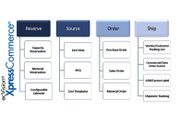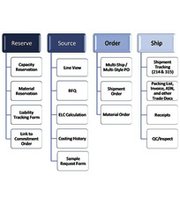Tech Companies Aim to Provide Solutions to Customs' '10 Plus 2' Law
Apparel importers are worried that a new security regulation proposed by U.S. Customs and Border Protection and aimed at improving security for incoming cargo will delay the process of getting goods through customs. But some technology providers are claiming they have the software to make compliance easier.
The proposed law was submitted as part of the Safe Port Act of 2006. On Nov. 7, the president’s Office of Management and Budget gave the U.S. Customs Service the authority to proceed with the so-called “10 Plus 2” regulation. If passed, it will add 10 more points of data required on electronic shipping manifests submitted to customs by importers and two by the carrier. The additional data include information on the manufacturer, seller, consolidator, buyer, delivery location and country of origin.
The House Ways and Means Committee is proposing the Customs Service pilot the regulation with a number of importers before it is enacted. There will also be a 60-day implementation period as well as a year of “informed compliance.” If all goes as planned, it should be enacted in January. The aim is to identify high-risk cargo, but the costs may be exorbitant. According to AMR Research, the regulation will force up to $4.4 billion of added costs on importers over a 10-year period.
The fastest way to submit the manifests is electronically in a process similar to the EDI many manufacturers and retailers currently use. Technology providers that specialize in supply-chain management applications are gearing up to accommodate 10 Plus 2.
Iselin, N.J.–based ecVision, which specializes in PLM (product lifecycle management software) has been among the companies on top of the 10 Plus 2 situation and is pointing to its XpressCommerce PLM/supply-chain execution software as a means of compliance.
“It’s a role-based system,” said Gary Barraco, senior manager of marketing and alliance development for ecVision. “We capture all the data that’s necessary. It’s all put into a single message. It’s all data consolidation.”
Barraco said he believes brokers will be responsible for the brunt of the compliance issues but retailers and manufacturers still need visibility into the process as there will be steep penalties for non-compliance following the trial period. XpressCommerce captures and channels data to required parties throughout the supply chain. The 10 Plus 2 data will be required by vessels 48 hours before departure, and importers will need to submit their manifests 24 hours before departure, so time is of the essence, Barraco said. Aside from generating documents, the system also tracks production and schedules quality inspections, all via the Internet.
“You need to know where it sits on the ship. You need all the detailed information in one place,” he said.
Companies are anticipating they will have to hire more personnel to handle 10 Plus 2, Barraco added. “They will be adding another level of technology,” he said.
AMR Research’s Jane Barrett agreed.
“This is not just a transportation issue,” she said. “Since suppliers are involved, sourcing and procurement need to be, too. Logistics must work with the [third party] providers and carriers to ensure the data can be provided. Suppliers may need to change the format of their commercial invoices to make sure data is available at the line-item level.”Barrett said the ERP (enterprise resource planning) software may be able to handle some of the compliance steps, but she is advising industries to look at best-of-breed trade and logistics systems as well.
Barraco said that while 10 Plus 2 may be inevitable, he thinks the new administration may hold off on implementation, given the current state of the economy and the fact that retailers and importers are already dealing with added expenses.Lectra Updates Marker System
Cypress, Calif.–based Lectra has rolled out a new version of Diamino, its marker-making system for fashion and home-furnishing applications.
The new Diamino Fashion and Diamino Footwear packages now feature a manual mode as well as an automated mode. The manual mode enables users to manipulate patterns on a marker, while the auto marker does everything on its own.
The options were given to allow patternmakers and production staff to adapt to certain situations, whether highly complex situations that require some human intervention or high-volume work where automation is used as a time saver.
The system also works in automotive and industrial applications. For more information, visit www.lectra.com.DigiFab Gets SGIA Award
Los Angeles–based printing-systems supplier DigiFab has received the Digital Printing and Imaging Association’s “Product of the Year” award in the textile-media category. The award was presented at the recent Specialty Graphics and Imaging Association Expo in Atlanta. DigiFab was recognized for its inkjet-printable Cotton Canvas product line for the wide-format printing market.
“This award is the recognition of our strong position in inkjet-printable fabrics and fabric-coating technologies gained through many years of development,” said Marty Silveira, sales manager for DigiFab Systems. “We believe that fabric printing is going to significantly impact and drive the digital printing market in 2009 and for many years after.”Avery Dennison Launches New Web Site
Avery Dennison has launched a new Web site for its information and brand-management division at www.ibmd.averydennison.com.
The site features all of the company’s products relating to brand protection, tracking and display. These include RFID (radio frequency identification), bar-code systems, tags and labels, printing systems, and trim- and supply chain–related software.
The new site reflects the company’s new look following the acquisition of Paxar Corp.























